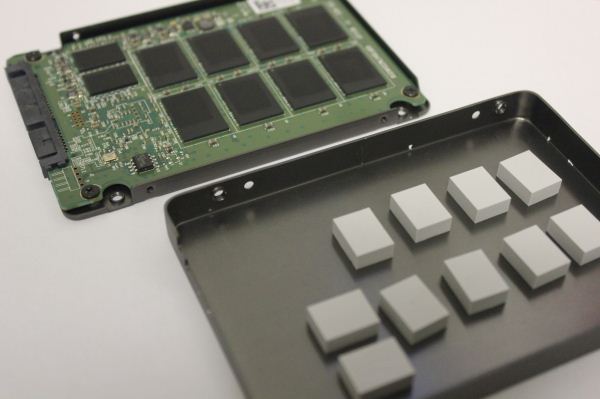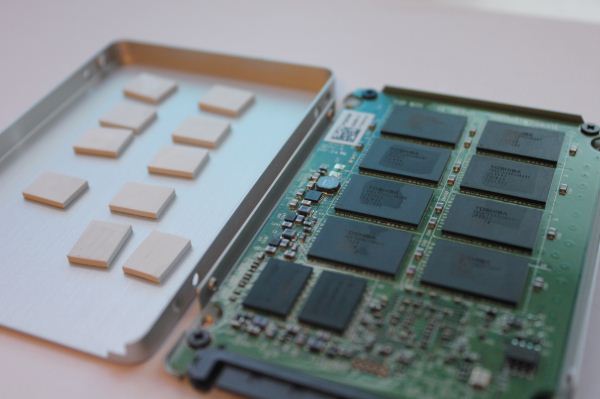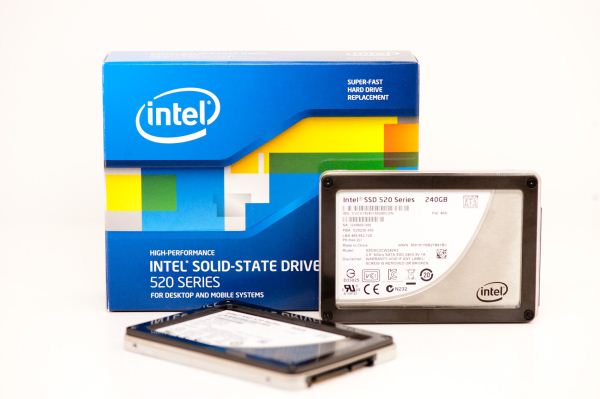OCZ Releases Low Profile Version of Vertex 3
by Kristian Vättö on May 18, 2012 11:45 AM ESTOCZ has added a low profile version of the Vertex 3 to their SSD portfolio. The drive has a height of 7mm, which is 2.5mm slimmer than most 2.5" drives are. Other specifications match the regular Vertex 3, so reading our Vertex 3 review will give you an idea of the performance, but below is a specification table in case you don't remember the main details off hand:
| OCZ Vertex 3 Low Profile Specifications | ||||
| Capacity | 60GB | 120GB | 240GB | 480GB |
| Interface | SATA 6Gb/s | |||
| NAND | 2Xnm MLC | |||
| Number of NAND Packages | 8 | 16 | 16 | 16 |
| Number of Die per Package | 1 | 1 | 2 | 4 |
| Sequential Read | 535MB/s | 550MB/s | 550MB/s | 530MB/s |
| Sequential Write | 480MB/s | 500MB/s | 520MB/s | 450MB/s |
| Max 4K Random Write | 80K IOPS | 85K IOPS | 85K IOPS | 35K IOPS |
A Canadian retailer, Canada Computers, is already listing the low profile versions and pricing appears to be slightly higher compared to normal Vertex 3. However, Canada Computers has not received any stock yet so the prices may not be final yet. Availability is unknown as of now but expect to see these SSDs in stores within a week or two.
We are definitely experiencing a shift towards smaller form factors in storage devices and computing in general. Especially Intel's Ultrabook project is fuel for the fire because in order to meet Intel's strict dimension limitations, it's necessary to use either mSATA SSDs or thinner 2.5" SSDs/HDDs. On top of that, the internal components of SSDs don't usually even need the extra 2.5mm and making a drive 7mm instead of 9.5mm is only a matter of shaving off some of the chassis. I'll give you a sneak preview of our Plextor M3 Pro review to demonstrate this:
Plextor M3 - 9.5mm tall
Plextor M3 Pro - 7mm tall
Both SSDs have exactly the same PCBs and the only thing that makes the M3 Pro thinner is the fact that it has thinner thermal pads. What this means is that pretty much any 2.5" SSD could be turned into a 7mm model without even modifying the PCB.
I would like to see more hybrid approaches like what Intel is doing, though. Hybrid in this case means that there's a riser attached by screws that turns a 7mm SSD into a 9.5mm SSD. Some laptops are designed for 9.5mm drives and a 7mm drive might jiggle inside the laptop.
Example of the use of a riser
Having a riser means the user doesn't need to decide between 7mm and 9.5mm as you can easily remove the riser if you need to fit drive inside a computer that only takes 7mm drives. Of course, offering 7mm and 9.5mm drives like OCZ and Plextor are doing is better than offering only 9.5mm drives, but using a riser still looks like the best option.
Source: OCZ













28 Comments
View All Comments
DigitalFreak - Friday, May 18, 2012 - link
Seems like a waste of money to have two separate product lines that are identical aside from the thickness of the drive. Intel is doing it right.Guspaz - Friday, May 18, 2012 - link
Intel is doing it completely wrong. Why? Two reasons:1) The screws included are too long to use with the bracket removed: if you want to remove the bracket, you need new very hard to find screws
2) Removing the bracket voids your warranty. Yes. Really. See message 8 here: http://communities.intel.com/message/129550
MrSpadge - Monday, May 21, 2012 - link
"Completely wrong" due to 2 reasons which could easily be fixed. Sure...kingpotnoodle - Monday, May 21, 2012 - link
1) You unscrew the riser and use the screws that previously held your 7mm hard drive in place in your laptop or buy some M2-3mm, it's not rocket science for someone who is already changing the drive in their laptop.2) Screw it back on before RMA - how would they know? Many manufacturers ask you to reattach optional parts before RMA in my experience.
At least Intel give the option and make it possible and allow a drive to be reused in different laptops.
jmunjr - Saturday, May 19, 2012 - link
The Lenovo x220 uses 7mm drives and it was a hassle having limited SSD options. An mSATA drive was also an option but some people don't want to go that route and storage limitations existed. Now you can do both!Taft12 - Friday, May 18, 2012 - link
A good industry trend IMHO, I expect ultrabooks to quickly transition to this form factor.Is 7mm the same height as the Seagate slim rotational laptop drives?
Solidstate89 - Friday, May 18, 2012 - link
Nah, they'll either use integrated/soldered on NAND chips or they'll continue using mSATA form factor. This is too large.Kristian Vättö - Saturday, May 19, 2012 - link
Some Ultrabooks already use 2.5" 7mm drives.Solidstate89 - Saturday, May 19, 2012 - link
Sure, HDDs. And then they use an mSATA SSD for the "cache" drive. Those are only offered for a cheap solution.Anything using only an SSD uses either an mSATA SSD or ones that are soldered into the main-board. I can't think of a single reason why a manufacturer would want to use a 7mm 2.5" SSD in an Ultrabook when there are already better options to choose from.
RussianSensation - Sunday, May 20, 2012 - link
1) mSATA drives are MUCH slower than a dedicated SSD2) soldered SATA drives are too expensive and leave no option for upgrading.
So neither of those options is actually superior to thinner SSDs in laptops. If they can make faster mSATA drives and there is more available options in the industry, then I could see mSATA becoming a good alternative.